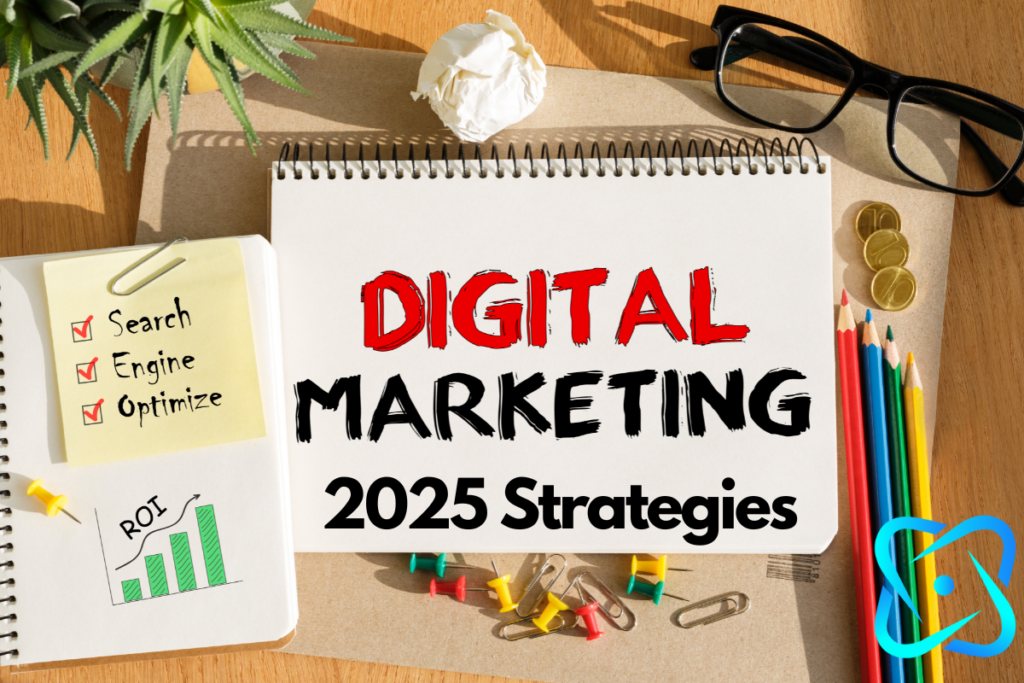A Beginner’s Guide to Content Marketing
Content marketing is a strategic approach focused on creating and distributing valuable, relevant, and consistent content to attract and retain a clearly defined audience. Whether you’re a small business owner or a budding entrepreneur, understanding the basics of content marketing can significantly boost the growth of your brand. In this guide, we’ll explore the essentials every beginner needs to know about content marketing.

What is Content Marketing?
Content marketing is not just about creating content; it’s about creating content with a purpose. According to the Content Marketing Institute, 70% of marketers are actively investing in content marketing. This statistic underscores its importance as a critical component of modern marketing strategies.
The Evolution of Content Marketing
The concept of content marketing dates back to the late 19th century when businesses began using print media to engage customers. Fast forward to today, and content marketing has evolved into a digital powerhouse, encompassing blogs, social media, videos, podcasts, and more. With the rise of digital platforms, brands can reach a global audience more effectively than ever before.
The Importance of Content Marketing
In today’s digital age, content marketing is crucial for businesses for several reasons:
Improves Brand Awareness
One of the foremost benefits of content marketing is its power to bolster brand awareness. By consistently delivering quality content, you position your brand as a thought leader in your industry. This not only helps you stand out from competitors but also ingrains your brand in the minds of your audience. Think of every blog post, social media update, or video as an opportunity to showcase your expertise and unique voice.
Builds Trust and Loyalty
Trust is the foundation of any successful business relationship. By providing your audience with valuable and insightful content, you cultivate a sense of trust and credibility. Over time, as you continue to meet the needs and expectations of your audience, this trust transforms into loyalty. Loyal customers are more likely to engage with your brand, make repeat purchases, and even become advocates, spreading positive word-of-mouth about your offerings.
Enhances SEO
Search engine optimization (SEO) is crucial for improving your website’s visibility in search engine results. Well-optimized content is a game-changer for your SEO strategy. By incorporating relevant keywords, crafting compelling meta descriptions, and ensuring quality backlinks, your content can climb the search engine rankings. This means more organic traffic to your site, resulting in increased exposure and potential conversions. Remember, the better your SEO, the easier it is for potential customers to find you.
Generates Leads
Effective content marketing does more than just attract visitors—it converts them into leads. By addressing the pain points and needs of your audience, you can create content that guides them through the buyer’s journey. Whether it’s through informative blog posts, engaging eBooks, or insightful webinars, you have the opportunity to capture their interest and encourage them to take action. With strategic calls-to-action (CTAs) and lead magnets, you can collect valuable information from prospects, nurturing them into loyal customers.
Getting Started with Content Marketing
Now that you understand what content marketing is and why it’s important, let’s dive into how you can get started.
Define Your Goals

When you’re diving into the world of content marketing, the first step is crystal clear: define your goal. It might sound simple, but this foundational step can make or break the success of your entire strategy. So, let’s chat about why it’s so important and how you can set those goals in a way that leads to tangible results.
Imagine you’re planning a road trip. You wouldn’t just jump in the car and start driving without knowing your destination, right? The same principle applies to content marketing. Your goals are your destination; they give you direction and purpose. Whether you want to increase website traffic, boost brand awareness, or generate leads, having clear, measurable objectives will guide your content creation process and help you stay on track.
1. Increase Website Traffic:
If more eyeballs on your website is your primary aim, your content should be optimized for search engines and shareable on social media platforms. Focus on creating blog posts that answer common questions in your industry, use relevant keywords, and provide value to readers. This approach not only attracts more visitors but also keeps them coming back for more.
2. Boost Brand Awareness:
For those looking to make a mark and establish a strong brand presence, your content should reflect your brand’s voice and values. Engage with your audience through storytelling, shareable visuals, and interactive content that not only informs but entertains. Remember, the more relatable and recognizable your brand becomes, the more likely people will remember you.
3. Generate Leads:
If lead generation is your main goal, tailor your content to capture and nurture potential customers. This could involve creating gated content like eBooks or whitepapers that require an email signup, or designing webinars and online events that position you as an industry expert. Your content should guide leads through the sales funnel, from awareness to consideration and, ultimately, to conversion.
Why Measure Success?
Defining your goals is just the beginning. To truly understand the impact of your content marketing efforts, you need to measure success. Use analytics tools to track key performance indicators (KPIs) related to your goals, such as website visits, engagement rates, lead generation, and conversion rates. Regularly analyzing these metrics allows you to tweak your strategy, ensuring you’re always moving toward your goals.
Know Your Audience
When it comes to content marketing, understanding your audience isn’t just a suggestion—it’s a necessity. Imagine trying to throw a party without knowing what your guests like. You might end up with a room full of cat lovers and a playlist full of dog videos! Similarly, creating content without knowing your audience can lead to a mismatch that leaves everyone unsatisfied.
Step 1: Conduct Market Research
First things first, let’s talk about market research. This might sound a bit formal, but think of it as getting to know a new friend. You wouldn’t launch into a conversation without any idea of their interests, right? Similarly, delve into the demographics of your target audience. Who are they? What do they do? Where do they hang out online? Use tools like surveys, social media analytics, and Google Analytics to gather this information.
Step 2: Identify Preferences and Pain Points
Next, it’s time to dig deeper. What makes your audience tick? What keeps them up at night? Understanding their preferences and pain points is like having a secret map to their hearts. Maybe they’re tech enthusiasts who crave the latest gadget news, or perhaps they’re busy parents looking for quick meal solutions. Identifying these aspects will help you tailor your content to truly connect with them.
Step 3: Create Resonant Content
Now, armed with your newfound knowledge, you’re ready to create content that resonates. This is where the magic happens. Whether it’s blog posts, videos, or social media updates, ensure your content speaks directly to your audience’s needs and interests. Use language they relate to, address their challenges, and offer solutions. This not only engages them but also builds trust and loyalty.
Step 4: Test and Adapt
Finally, remember that understanding your audience is an ongoing process. People’s preferences change, and so should your content strategy. Regularly test different types of content and pay attention to the feedback. This will help you adapt and refine your approach, ensuring you continue to hit the mark.
Create a Content Plan
Develop a content calendar outlining the types of content you plan to create, the topics you’ll cover, and the platforms you’ll use for distribution. A well-thought-out content plan ensures consistency and aligns with your marketing goals.
Types of Content Marketing
There are numerous content formats you can incorporate into your strategy. Here are some popular ones:
Blog Posts
Blogging is a cornerstone of content marketing. A well-written blog post can drive traffic, enhance SEO, and establish your brand as an industry authority. HubSpot reports that companies that blog receive 97% more links to their websites.

Videos
Video content is highly engaging and can effectively convey your brand’s message. Platforms like YouTube and TikTok offer vast opportunities to reach a wide audience. With 85% of businesses using video as a marketing tool, it’s evident that video content is here to stay.
Social Media Content
Social media platforms are perfect for sharing short, engaging content. They allow you to interact with your audience directly and build a community around your brand. Tailor your content to fit each platform’s unique style and user base.
Social media platforms are perfect for sharing short, engaging content. They allow you to interact with your audience directly and build a community around your brand. Tailor your content to fit each platform’s unique style and user base.
According to the Global State of Digital 2023 report by Hootsuite and We Are Social, as of January 2023, there are 4.76 billion social media users worldwide, equating to nearly 59.4% of the global population. This statistic highlights the immense potential for brands to connect with a vast audience and build communities through tailored content on various social media platforms.
Infographics
Infographics combine visuals with data, making complex information easy to understand and share. They are highly shareable and can increase brand visibility across social media channels.
According to a study by HubSpot, infographics are liked and shared on social media three times more than any other type of content. This highlights their effectiveness in boosting brand visibility and engagement across various platforms.
Optimizing Content for SEO
Creating great content is only part of the equation. You must also ensure it’s optimized for search engines to increase visibility. Here are some tips:
Keyword Research
Identify relevant keywords your audience is searching for. Use tools like Google Keyword Planner or SEMrush to find keywords with good search volume and low competition. Incorporate these keywords naturally into your content, including titles, headers, and meta descriptions.

On-Page SEO
Ensure your content is structured properly. Use clear headings, subheadings, and bullet points to improve readability. Optimize images with alt text and ensure your website is mobile-friendly.
Quality Backlinks
Backlinks from reputable sites can boost your site’s authority. Reach out to industry influencers or guest post on relevant blogs to build quality backlinks.
Measuring Marketing Success
To determine if your marketing efforts are paying off, track key performance indicators (KPIs) such as:
- Website Traffic: Monitor the number of visitors and the pages they visit.
- Engagement Metrics: Track likes, shares, comments, and time spent on your site.
- Lead Generation: Measure the number of leads generated through your content.
- Conversion Rates: Analyze how many leads convert into paying customers.

Conclusion
Content marketing is a powerful tool for growing your brand, building trust with your audience, and driving sales. By understanding the fundamentals and executing a well-planned strategy, you can effectively leverage content marketing to achieve your business goals. Remember, the key is to create high-quality, valuable content that resonates with your audience and meets their needs. Start small, be consistent, and measure your progress to refine your strategy over time. With patience and persistence, content marketing can become a cornerstone of your marketing efforts.



